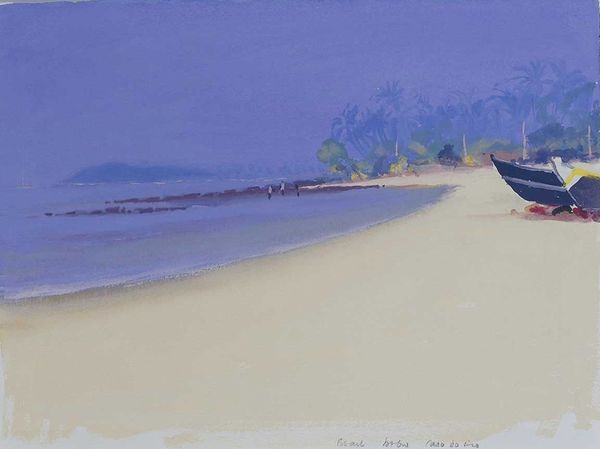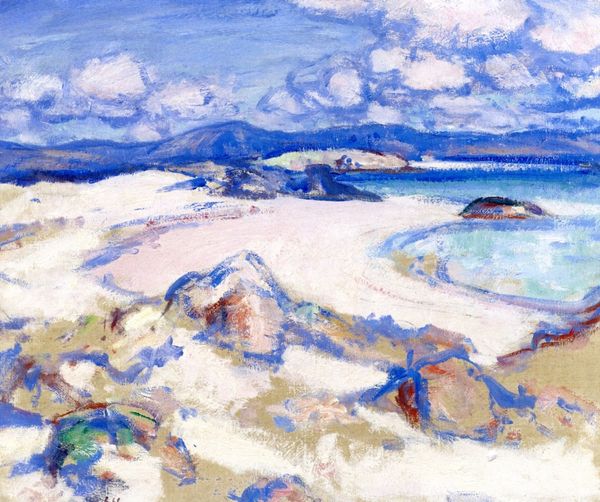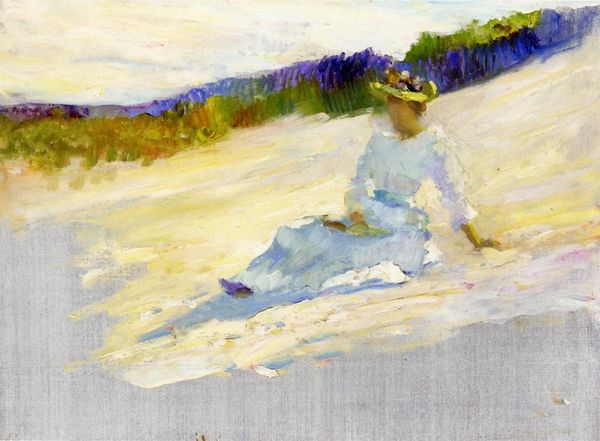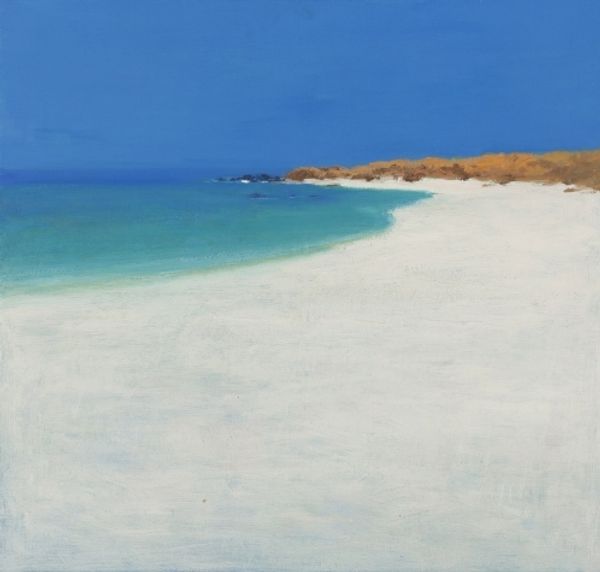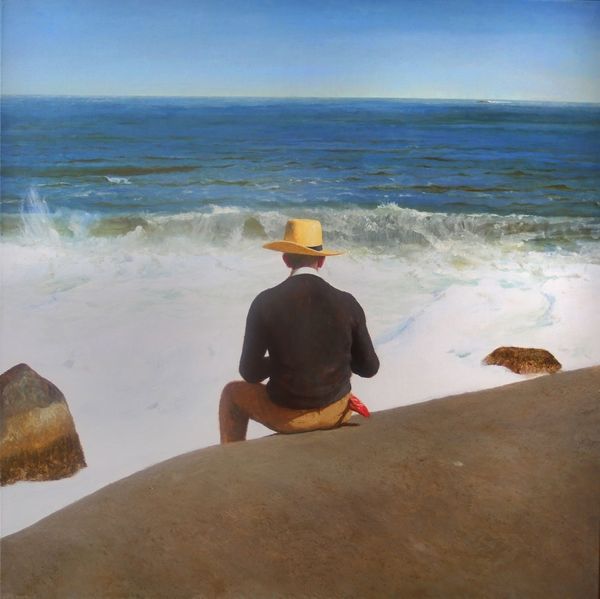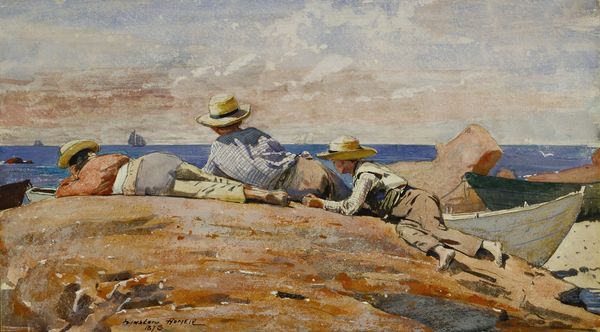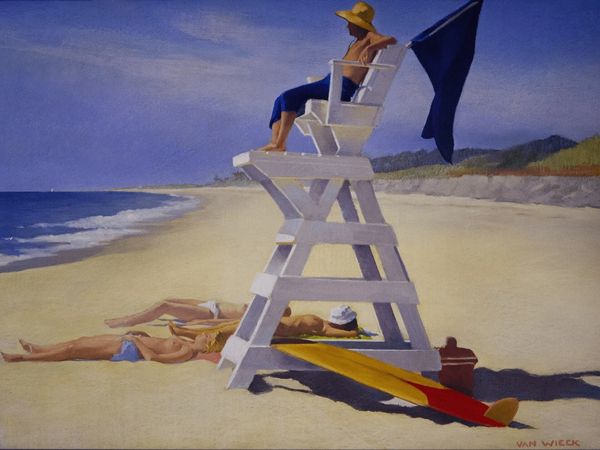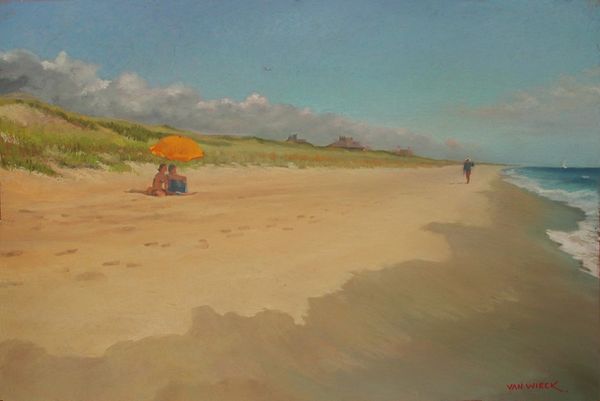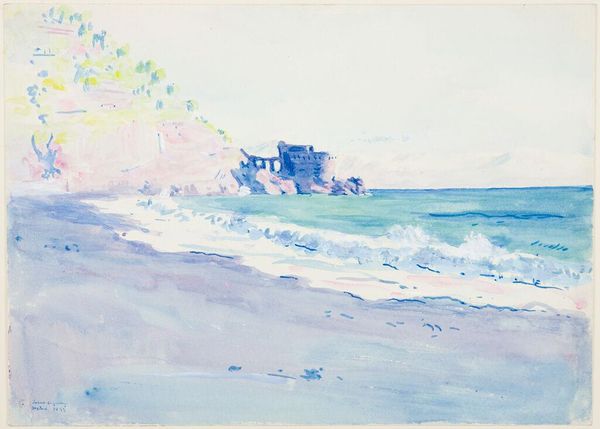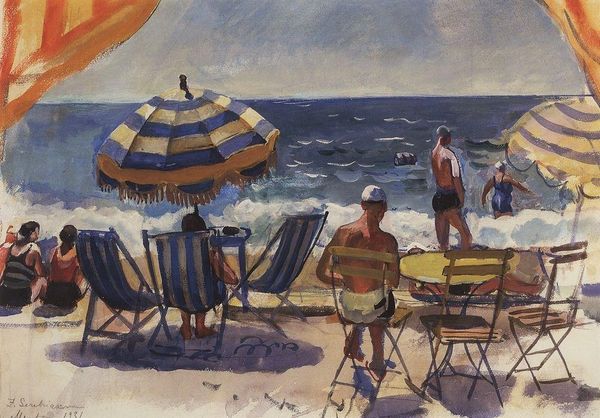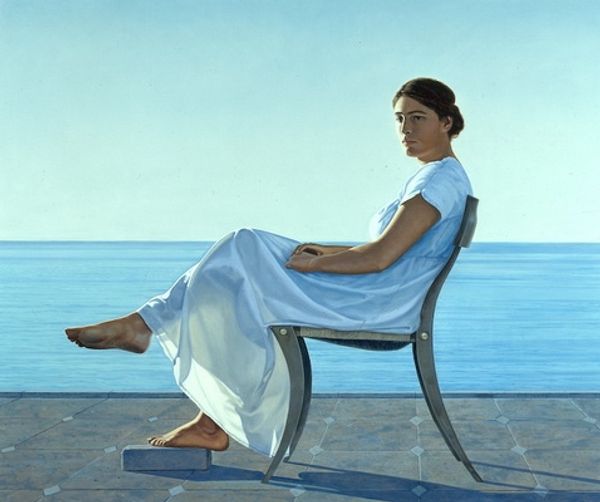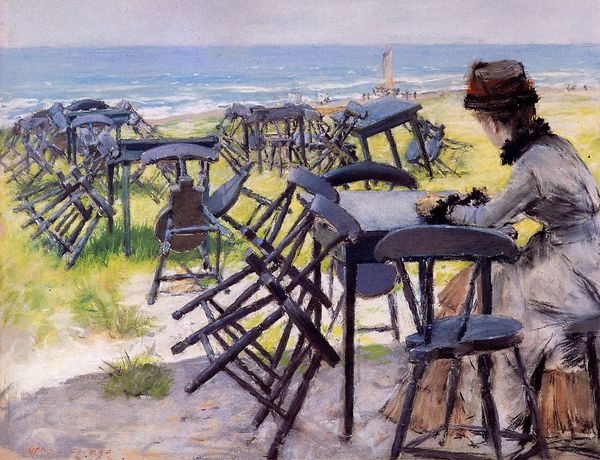
Copyright: Public domain US
Editor: Here we have Edward Hopper's "Jo Sketching at Good Harbour Beach," created in 1923, most likely in watercolor. It depicts a woman sitting on a beach, sketching the landscape. There is a tranquility about this image that draws me in. What do you see when you look at it? Curator: Beyond its calm surface, I see a commentary on artistic production and gender roles. Jo, Hopper’s wife, was also an artist, often overlooked. Consider how Hopper frames her here. She is actively working, positioned on the margins between civilization—signified by the buildings in the background—and the vast, indifferent sea. Does that feel at all isolating? Editor: I suppose it does, now that you point it out. She's on the edge of things. Is that a statement about women artists during that time? Curator: Exactly! Think about the early 20th century, when women were striving for recognition in traditionally male-dominated fields. Hopper places Jo within the Impressionist tradition of plein-air painting, yet also hints at a struggle for space and recognition within that tradition. This idyllic scene then becomes layered with socio-political context. Editor: I never would have considered that reading! It’s interesting how the social context influences how you perceive a painting. Curator: Indeed. And consider the gaze. We, as viewers, are positioned *behind* Jo, almost voyeuristically observing her process. It prompts us to question our role as spectators, especially in relation to a female artist depicted in her creative act. Does this change how *you* see it? Editor: Definitely. I now see it's more than just a pleasant beach scene; it’s a layered narrative. I'll never look at Hopper the same way! Curator: Art history gives us tools to see beyond the surface, recognizing art's engagement with its own social fabric.
Comments
No comments
Be the first to comment and join the conversation on the ultimate creative platform.
